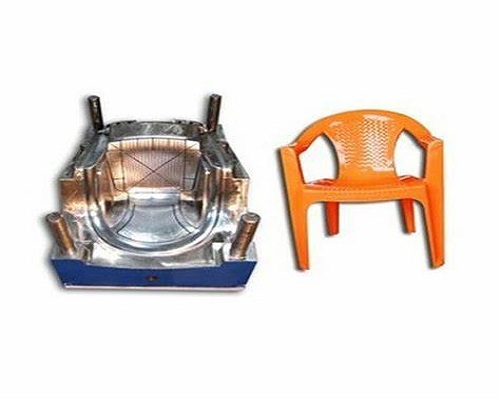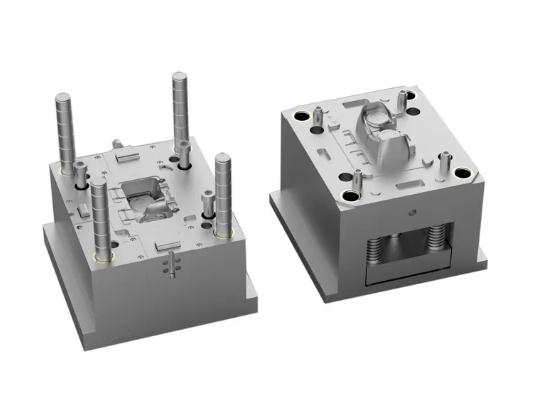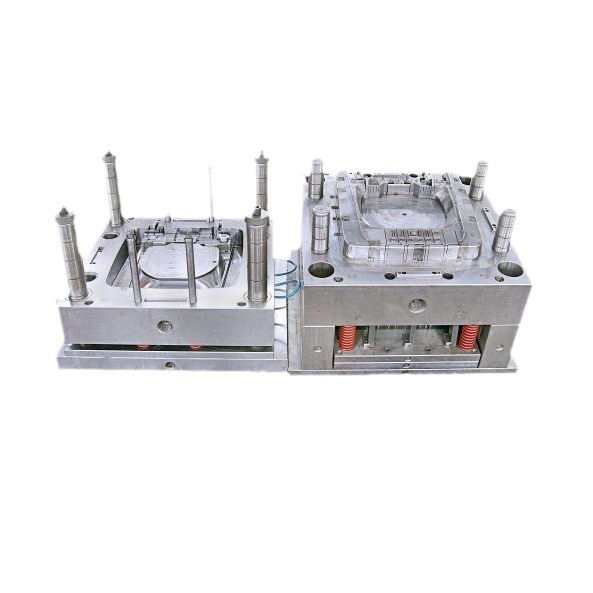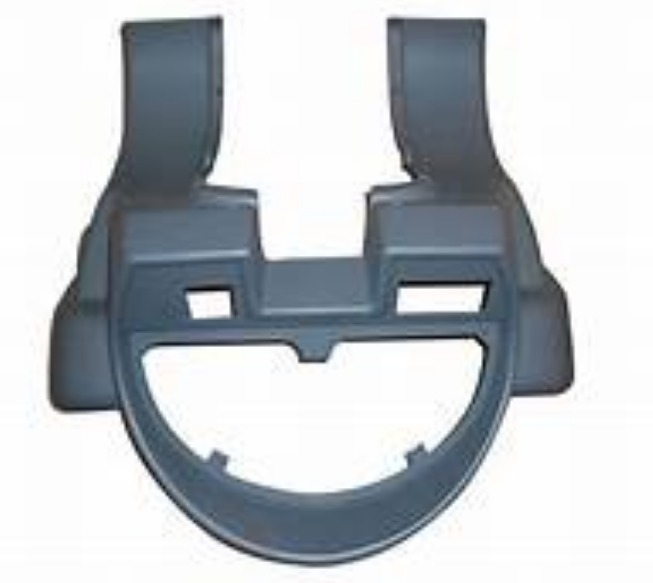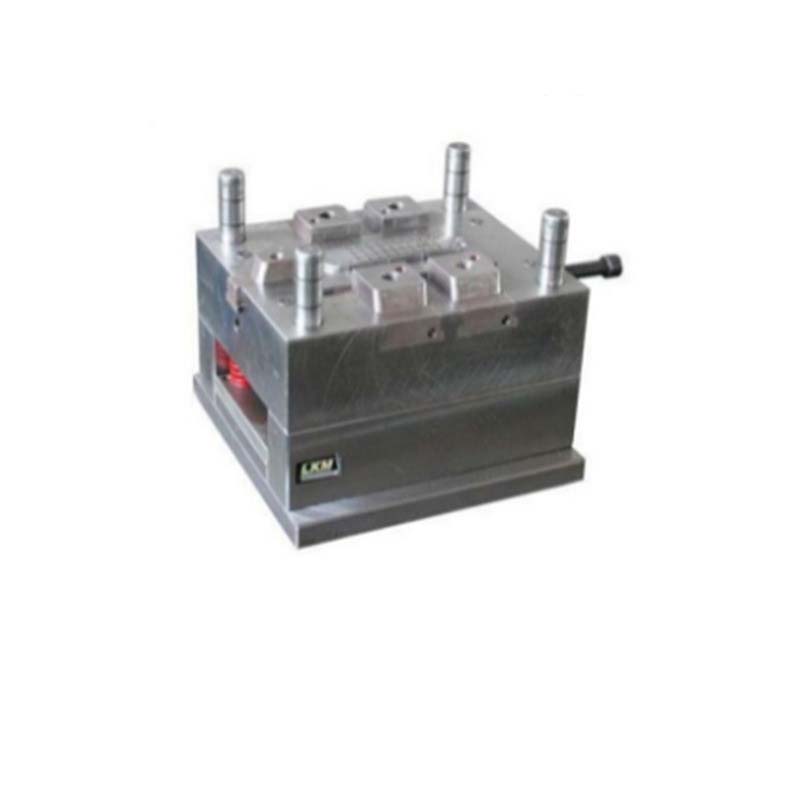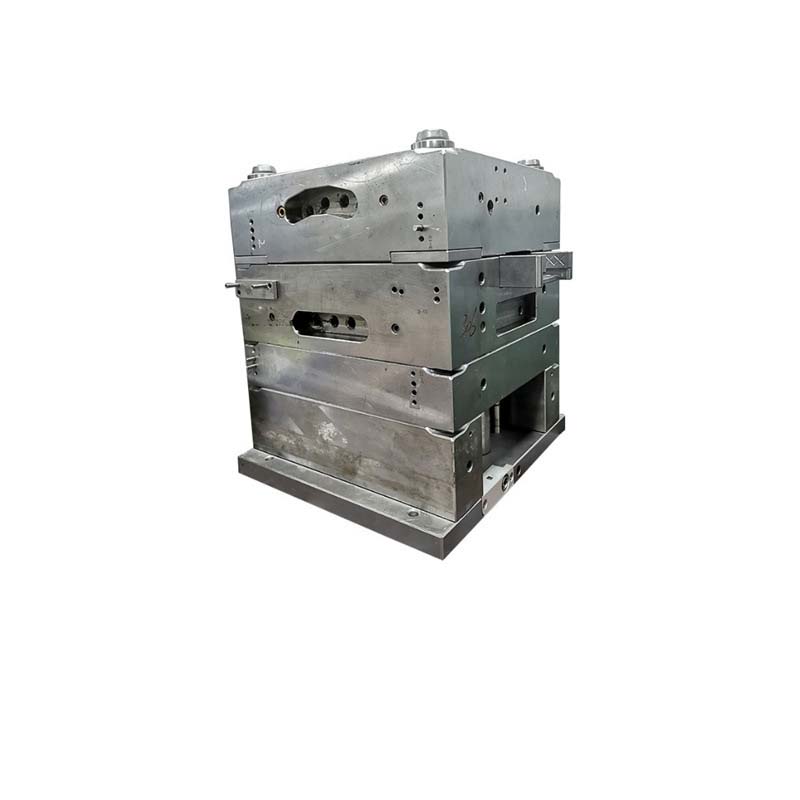Introduction
Definition of Hot Runner in Plastic Mold
A hot runner in plastic mold is a heating component system used in injection molds. Its primary function is to keep the plastic melt in the runner and gate areas in a molten state during the injection molding process. In traditional molds, the runner and gate systems cool down quickly, resulting in solidified plastic waste that needs to be removed and recycled after each injection cycle. However, with a hot runner system, the plastic remains in a flowing state, allowing for a continuous injection process without the need to discard the runner material. This not only reduces material waste but also streamlines the production process. For example, in a high - volume production of small plastic components like electronic connectors, the use of a hot runner system ensures that the small - diameter runners remain filled with molten plastic, enabling precise and efficient injection into multiple cavities.
The Working Principle of Hot Runner
Components of Hot Runner System
A hot runner system is composed of several key components, each playing a crucial role in ensuring the smooth operation of the plastic injection molding process.
- Hot Runner Manifold: Also known as the hot runner plate, it is the central part of the system. Its main function is to distribute the molten plastic evenly to each nozzle. The manifold is usually made of high - quality heat - resistant materials such as steel alloys. For example, in a large - scale production of plastic containers, the hot runner manifold can be designed with multiple channels to feed molten plastic to different cavities simultaneously. It is equipped with heating elements, typically cartridge heaters, which are inserted into holes drilled in the manifold to maintain the required temperature.
- Nozzles: Hot runner nozzles are the components that directly inject the molten plastic into the mold cavity. There are different types of nozzles, such as open nozzles and valve - gated nozzles. Open nozzles are simple in structure and suitable for applications where gate vestige is acceptable. Valve - gated nozzles, on the other hand, have a needle - like valve that can be precisely controlled to open and close. This allows for better control of the plastic flow and can eliminate gate vestige, making them ideal for high - quality products like precision - molded electronic parts.
- Heating Elements: These are essential for maintaining the molten state of the plastic in the hot runner system. As mentioned before, cartridge heaters are commonly used in the hot runner manifold. Heating bands are often used around the nozzles. For instance, a heating band wrapped around a nozzle can ensure that the plastic near the nozzle tip remains in a flowing state, preventing premature solidification.
- Thermocouples: Thermocouples are temperature - sensing devices. They are placed at various points in the hot runner system, such as in the manifold and near the nozzles. Their function is to continuously monitor the temperature of the hot runner components. The temperature data collected by the thermocouples is then sent to a temperature controller. This closed - loop control system ensures that the hot runner system operates within the optimal temperature range. If the temperature drops below the set value, the temperature controller will increase the power supply to the heating elements; if it exceeds the set value, the power supply will be reduced.
How Hot Runner Maintains Molten State
The hot runner system maintains the molten state of plastic through a combination of heating elements and temperature control mechanisms. When the injection molding process starts, the heating elements, such as cartridge heaters in the manifold and heating bands on the nozzles, are powered on. These heating elements convert electrical energy into heat energy, which is then transferred to the plastic in the runner and nozzle channels.
The temperature of the hot runner system is carefully regulated. The thermocouples, as mentioned earlier, constantly measure the temperature. The temperature controller, which is like the "brain" of the system, compares the measured temperature with the pre - set temperature values. For example, if the set temperature for a particular hot runner system is 230°C for processing a specific type of plastic (like polypropylene), and the thermocouple measures a temperature of 225°C, the temperature controller will send a signal to increase the power to the heating elements. This causes the heating elements to generate more heat, raising the temperature of the hot runner components and the plastic inside them back to the set value.
Moreover, the insulation of the hot runner system also contributes to maintaining the molten state. Insulating materials are used around the hot runner components to reduce heat loss to the surrounding environment. This ensures that the heat generated by the heating elements is effectively used to keep the plastic in a molten state, rather than being wasted. In this way, the hot runner system can ensure that the plastic remains in a flowing state throughout the injection molding cycle, enabling continuous and efficient production.
Importance of Hot Runner in Plastic Mold Injection Processing
1. Material Savings
Reducing Material Waste
In traditional plastic mold injection with cold runner systems, a significant amount of plastic is wasted in the form of runner and gate waste. For example, in a production run of small plastic toys, when using a cold runner system, about 20 - 30% of the total plastic injected may end up as runner waste. However, with a hot runner system, this waste can be almost eliminated. According to industry statistics, on average, hot runner systems can reduce runner waste by up to 95%. This is because the plastic in the hot runner remains in a molten state and can be continuously used for injection, rather than solidifying and being discarded as in the case of cold runners. This reduction in material waste directly leads to cost savings in plastic raw materials. Considering the large - scale production of plastic products, even a small percentage reduction in material waste can result in substantial cost savings over time. For instance, if a plastic product manufacturer uses 100 tons of plastic raw materials per month in production, and by switching to a hot runner system, they can reduce waste by 20%, that's 20 tons of plastic saved per month, which can lead to significant cost savings depending on the price of the plastic raw material.
Recycling and Environmental Benefits
The reduction in plastic waste due to hot runner systems also has positive implications for recycling and the environment. With less plastic waste being generated, there is less need for recycling processes, which in turn reduces the energy consumption associated with recycling. Recycling plastic requires energy for sorting, melting, and re - processing. By minimizing the amount of waste, we are conserving energy and reducing the carbon footprint associated with plastic recycling. Additionally, less plastic waste means less plastic ending up in landfills or as environmental pollutants. Plastic waste in landfills takes a long time to decompose and can release harmful substances. In the natural environment, plastic waste can cause damage to wildlife and ecosystems. Therefore, the use of hot runner systems in plastic mold injection processing contributes to a more sustainable and environmentally friendly manufacturing process.
2. Quality Improvement
Minimizing Internal Stress in Products
One of the key advantages of hot runner systems is their ability to minimize internal stress in plastic products. In a cold runner system, the plastic cools down as it flows through the runner and gate, which can cause uneven cooling and contraction within the product. This uneven cooling leads to internal stress, which may cause the product to warp, crack, or have reduced mechanical properties over time.
However, hot runner systems keep the plastic in a molten state throughout the injection process. This allows the plastic to flow more evenly into the mold cavity, ensuring a more uniform temperature distribution within the product during the filling and cooling stages. As a result, the internal stress in the product is significantly reduced. For example, in the production of plastic lenses for optical devices, minimizing internal stress is crucial for maintaining optical clarity and dimensional stability. With a hot runner system, the plastic can be injected into the mold cavity at a consistent temperature, resulting in lenses with minimal internal stress, better optical performance, and fewer defects.
Consistent Product Dimensions
Hot runner systems also play a vital role in ensuring consistent product dimensions. In traditional injection molding with cold runners, the solidification of the runner system can affect the pressure and flow of the plastic into the mold cavity, leading to variations in the amount of plastic filling each cavity. This can result in products with inconsistent dimensions.
In contrast, hot runner systems provide a more stable and consistent flow of molten plastic. The precise temperature control in the hot runner ensures that the viscosity of the plastic remains constant, allowing for accurate and repeatable filling of the mold cavities. This consistency in plastic flow leads to products with highly accurate and consistent dimensions. For instance, in the manufacturing of automotive plastic components that require tight tolerances for proper assembly, a hot runner system can guarantee that each component has the same dimensions, reducing the need for post - processing and quality control checks due to dimensional variations.
3. Production Efficiency
Shortening Cycle Time
The use of hot runner systems can significantly shorten the injection molding cycle time. In a cold runner system, a significant portion of the cycle time is spent waiting for the runner and gate to cool down and solidify before the mold can be opened and the product ejected. This cooling time can be a major bottleneck in the production process.
With a hot runner system, since the plastic in the runner remains molten, there is no need to wait for it to cool. This allows for a faster ejection of the product from the mold. On average, hot runner systems can reduce the cycle time by 30 - 50%. For example, in the high - volume production of plastic caps for bottles, where the cycle time is a critical factor for productivity, a hot runner system can reduce the cycle time from 10 seconds per cap to 6 seconds per cap. This reduction in cycle time directly increases the production output. If a production line runs for 8 hours a day, with a cold runner system, it can produce 2880 caps (8 hours * 3600 seconds / 10 seconds per cap). With a hot runner system, the same production line can produce 4800 caps (8 hours * 3600 seconds / 6 seconds per cap), a substantial increase in productivity.
Fewer Downtimes for Maintenance
Hot runner systems also lead to fewer downtimes for maintenance compared to cold runner systems. In cold runner systems, the solidified runner waste needs to be removed from the mold after each injection cycle. This process can sometimes cause damage to the mold, especially if the runner waste is difficult to remove. Over time, this can lead to wear and tear on the mold components, such as the runner channels and gates, requiring more frequent maintenance and replacement.
In contrast, hot runner systems do not produce runner waste that needs to be removed from the mold. This reduces the risk of mold damage during the removal process. Additionally, the heating elements and temperature control components in hot runner systems are designed to be reliable and require less frequent maintenance. As a result, the overall downtime for maintenance in a production line using hot runner systems is significantly reduced. This means that the production line can operate for longer periods without interruption, further increasing production efficiency.
4. Complex Part Molding
Enabling Intricate Geometries
Hot runner systems are particularly beneficial when it comes to molding plastic parts with intricate geometries. Parts with complex shapes, thin walls, or fine details require precise control of the plastic flow during injection. In traditional cold runner systems, the cooling of the plastic in the runner can cause the plastic to lose its fluidity before it can fully fill the complex cavities of the mold, resulting in incomplete or defective parts.
However, hot runner systems maintain the molten state of the plastic, allowing it to flow more easily into the most intricate areas of the mold cavity. For example, in the production of plastic micro - gears used in small motors or precision instruments, the hot runner system can ensure that the plastic fills the tiny teeth and thin walls of the gear mold accurately. The continuous flow of molten plastic provided by the hot runner system enables the creation of high - precision, complex - shaped plastic parts that would be difficult or impossible to produce with a cold runner system.
Handling Multi - Cavity Molds
In multi - cavity molds, ensuring that each cavity is filled evenly with plastic is crucial for producing consistent products. Hot runner systems excel in this aspect. The hot runner manifold is designed to distribute the molten plastic evenly to each nozzle, which then injects the plastic into the respective cavities.
For instance, in a 16 - cavity mold used for producing plastic medical components, a well - designed hot runner system can ensure that each of the 16 cavities receives the same amount of plastic at the same temperature and pressure. This results in 16 identical products with consistent quality. In contrast, in a cold runner system, the long runner channels leading to each cavity can cause variations in the plastic flow, temperature, and pressure, leading to differences in the quality and dimensions of the products in each cavity. The ability of hot runner systems to handle multi - cavity molds effectively makes them an essential choice for high - volume production of plastic products where consistency and quality are of utmost importance.
Comparison: Hot Runner vs. Cold Runner
Cost - Analysis Comparison Table
When considering the adoption of a hot runner or a cold runner system in plastic mold injection processing, cost is a crucial factor. The following table provides a detailed cost - analysis comparison between the two systems:
| Cost Aspect | Hot Runner | Cold Runner |
| Equipment Cost | Higher initial investment. The hot runner system includes components like the hot runner manifold, nozzles, heating elements, and thermocouples, which are relatively expensive. For example, a high - quality hot runner system for a medium - sized mold can cost around \(5,000 - \)15,000. | Lower equipment cost. A cold runner system mainly consists of a simple runner and gate system, with a cost typically in the range of \(1,000 - \)3,000 for a similar - sized mold. |
| Long - term Operating Cost | Lower in the long run. Since there is no runner waste, material costs are significantly reduced. Also, the shorter cycle time means lower energy consumption per unit of production. For instance, in a high - volume production of plastic containers, the savings in material and energy costs can amount to \(2,000 - \)5,000 per month. | Higher long - term cost. The runner waste generated needs to be recycled, which incurs recycling costs. Additionally, the longer cycle time due to runner cooling leads to higher energy consumption. |
| Maintenance Cost | Generally lower. Although the hot runner system has complex components, they are designed for durability and require less frequent maintenance. Maintenance costs are usually around \(500 - \)1,000 per year. | Higher maintenance cost. The removal of runner waste after each cycle can cause wear and tear on the mold, leading to more frequent maintenance and replacement of mold components, with annual maintenance costs potentially reaching \(2,000 - \)3,000. |
Quality and Efficiency Comparison
- Product Quality:
- Hot Runner: As mentioned before, hot runner systems minimize internal stress in products. This results in products with better dimensional stability and fewer defects. In the production of high - precision medical plastic components, hot runner - produced parts have a defect rate of less than 5%, while those from cold runner systems can have a defect rate of up to 15%.
- Cold Runner: The cooling of plastic in the runner and gate can cause uneven filling and cooling of the mold cavity, leading to products with internal stress, warping, and inconsistent dimensions.
- Production Efficiency:
- Hot Runner: Hot runner systems can reduce the injection molding cycle time by 30 - 50%, as there is no need to wait for the runner to cool. In a high - volume production line of plastic toys, a cold runner system may have a cycle time of 15 seconds per toy, while a hot runner system can reduce it to 8 - 10 seconds, significantly increasing the daily production output.
- Cold Runner: The long cooling time of the runner in a cold runner system is a major bottleneck in the production process, limiting the production speed and efficiency.
Yigu Technology's View
As a non - standard plastic metal products custom Supplier, Yigu Technology highly values the importance of hot runner in plastic mold injection processing. We understand that the adoption of hot runner systems can significantly enhance the competitiveness of our products. By minimizing material waste, we can offer more cost - effective solutions to our clients. The improved product quality and consistent dimensions resulting from hot runner technology enable us to meet the stringent requirements of various industries.
Moreover, the shorter cycle time and fewer downtimes for maintenance mean higher production efficiency, allowing us to fulfill large - volume orders in a timely manner. We believe that integrating hot runner technology into our manufacturing processes is a key step towards achieving sustainable growth and providing top - notch products to our customers.
